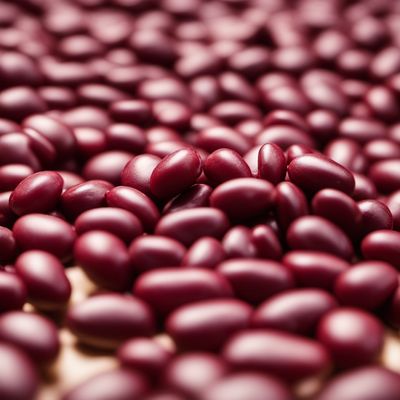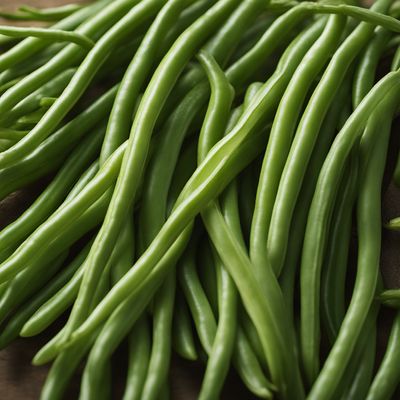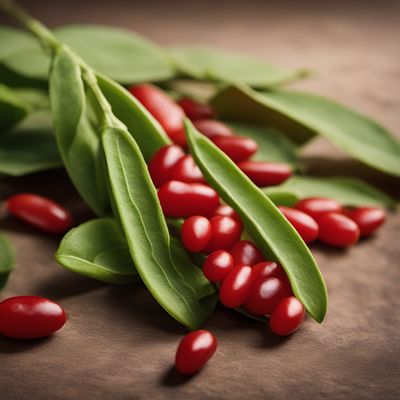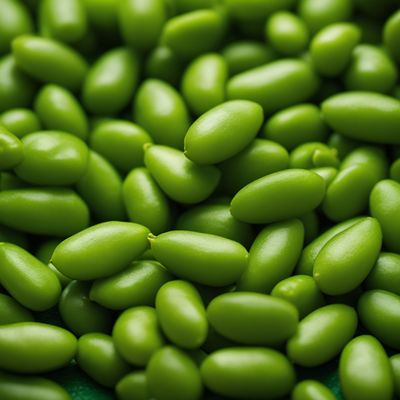
Ingredient
Tepary bean (fresh seeds)
The Resilient Legume
Tepary beans are small, oval-shaped legumes with a firm texture and a nutty, earthy flavor. They have a speckled appearance, ranging in color from white to brown or black. When cooked, they retain their shape and provide a satisfying bite, making them ideal for soups, stews, salads, and side dishes.
Origins and history
Tepary beans have a long-standing history in the southwestern United States and Mexico, where they have been cultivated by indigenous communities for centuries. These beans are well-adapted to arid climates and are known for their ability to withstand drought conditions. They hold cultural significance as a traditional food source and have played a vital role in the culinary heritage of Native American tribes in the region.
Nutritional information
Tepary beans are a nutritious ingredient, rich in protein, dietary fiber, and essential minerals such as iron and potassium. They are also low in fat and cholesterol, making them a healthy choice for a well-balanced diet.
Allergens
Tepary beans are not known to be allergenic.
How to select
When selecting fresh Tepary beans, look for plump, firm seeds with a smooth and unblemished surface. Avoid beans that appear wrinkled, discolored, or damaged. Additionally, choose beans that have been stored in a cool and dry environment to ensure their freshness and quality.
Storage recommendations
To maintain the freshness and quality of Tepary beans, store them in an airtight container in a cool, dry, and dark place. Properly stored, they can last for up to 1 year. If the beans have been cooked, store them in the refrigerator for up to 3-4 days.
How to produce
Tepary beans can be grown by amateur gardeners in regions with a warm and arid climate. They require well-drained soil and full sun exposure. Sow the seeds directly into the ground after the last frost, ensuring a spacing of 4-6 inches between each seed. Regular watering is necessary, but be cautious not to overwater as it may lead to root rot.
Preparation tips
Before cooking Tepary beans, sort through them to remove any debris or damaged beans. Rinse them thoroughly under cold water. To reduce cooking time, soak the beans overnight in water. Drain and rinse before using. Tepary beans can be cooked by boiling, simmering, or pressure cooking. They are commonly used in soups, stews, chili, salads, and as a side dish. Experiment with different herbs, spices, and vegetables to enhance their flavor.
Culinary uses
Tepary beans are commonly used in traditional Native American cuisine, particularly in dishes such as tepary bean stew, tepary bean salad, and tepary bean soup. They can also be incorporated into modern recipes, including veggie burgers, tacos, and casseroles.
Availability
Tepary beans are primarily cultivated in the southwestern United States, particularly in Arizona and New Mexico. They are also grown in Mexico and other arid regions around the world.
More ingredients from this category » Browse all

Azuki beans (without pods)
The Versatile Azuki Beans

Monantha vetches (without pods)
The Versatile Monantha Vetches

Yardlong beans (without pods)
The Versatile Legume

Runner beans (without pods)
The Vibrant Green Delight: Unveiling the World of Runner Beans

Borlotti or other common beans (without pods)
The Versatile Legume: Borlotti Beans

Rice beans (without pods)
The Versatile Rice Bean

Mung beans (without pods)
The Mighty Mung: Unlocking the Power of Mung Beans

Soyabeans (without pods)
The Mighty Bean: Unleashing the Power of Soyabeans

Lablab beans (without pods)
The Protein Powerhouse

Guar beans (without pods)
Versatile Legume Powerhouse

Black gram (fresh seeds)
The Nutritional Powerhouse: Fresh Black Gram Seeds

Jack beans (without pods)
The Versatile Legume: Unveiling the Wonders of Jack Beans
